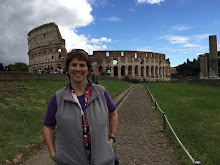In the Shadow of Blackbirds is the story of Mary Shelley Black, a 16 year old girl who is sent to live with her Aunt Eva in San Diego after her father is arrested for treason and put in jail. The time: October, 1918. The influenza epidemic is ravaging the United States. Everyone is wearing masks; people are dying so fast undertakers can't keep up with the demand for coffins and burials. People are fine one day, dead the next. Schools are closed, businesses are empty, and everyone is frightened they will be next.
World War I is also raging over in Europe--so imagine having a huge epidemic happening, and a world war going on at the same time. I wonder how people got through such a horrible experience. Mary Shelley arrives at her Aunt's house and hopes to stay only a short time--her father will surely get out of jail quickly, and then she can go home to Portland.
Meanwhile, Mary Shelley's childhood friend, Stephen has been living on Coronado Island, but joined the Army and left for Europe to fight. She travels to the island to visit his brother, Julius--a famous spiritual photographer. He claims to capture the image of dead loves ones in photos; he's grown immensely popular and people wait for hours outside his studio to have their photo taken. Stephen and Julius did not get along at all, and Mary Shelley doesn't care for him. But, last time she was there, he took a photo of her and then used it to advertise his studio. She's become a bit famous as "that girl". Mary Shelley is furious and reluctantly returns to his studio with her Aunt Eva. She is worried about Stephen, who has stopped writing letters from France. She hopes to get news of him from his mother or brother.
But--horribly, Stephen is dead. He died in France during battle, and Mary Shelley is devastated. Angry, she returns home and daringly goes outside during a thunderstorm and is hit by lightening. She undergoes a bizarre out of body experience--sees herself lying on the lawn, to all intents and purposes she's dead.
But she has to go back, and when she does, she finds that she can communicate with Stephen. He is full of anger, fear, and claims the blackbirds are killing him. His confusion and fury are hard to handle, and Mary Shelley is determined to put him to rest. But what she uncovers will surprise you!
I won't say anymore. Promise. It has an interesting ending; not what I had planned on reading. But a great ending at that! The whole cyclone of flu epidemic, communication with the dead, and World War I all come together to illustrate the horror of war and mass death. This was the beginning of weapons of mass destruction, and it left humanity knocked on it's knees. The author does a very good job of tying everything together into a cohesive story. The atmosphere is full of fear, distrust, and grief. The smells of onions, death, the powder of the camera, and sulfur permeate the pages of this book and put you firmly in the time and place.
I hope this author writes more novels, cause this one was impressive. The black and white photos throughout the novel help emphasize the horrid time of late 1918, when the world really did appear to be ending.
Rating: 8/10 for an excellent story idea, great use of atmosphere and photos of the flu epidemic. The type print in the novel, the use of black pages, and a strong main character all combine to make an unforgettable read.
Available in hardcover and ebook.



No comments :
Post a Comment